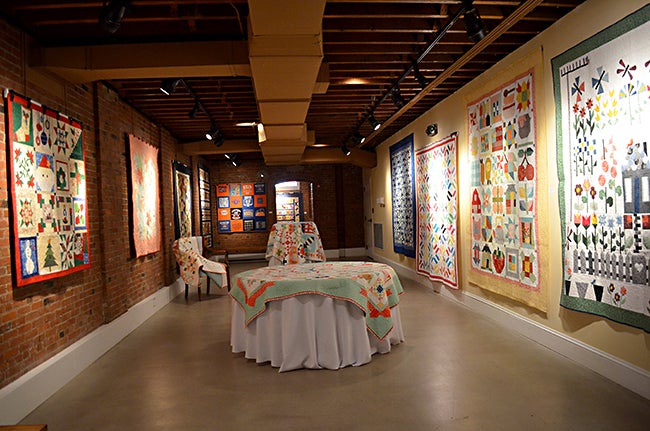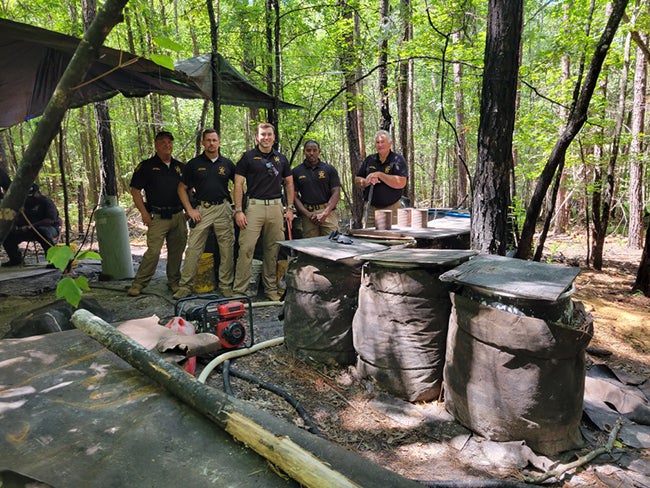Pike Liberal Arts students experiment in physics
Published 11:00 pm Friday, August 23, 2013

Robbie Calk and her dad, Mark, dropped an egg from 20-feet at the airport without it breaking or cracking. Later, her egg drop partner Sara Saunders successfully dropped an egg from 35-feet.
Eggs are dropping all over Troy.
Raw eggs have been dropping at the airport and at apartment complexes. They have even been seen dropping from a grain bin and the press box at a local stadium. Everywhere it seems.
Hen fruit is dropping from 20 feet, from 35 feet from 45 feet and more.
Some of the eggs crack and leave egg goo on the ground. Some don’t crack and there are shouts all around.
Jon Reynolds, Pike Liberal Arts Schools physics instructor, is behind the egging of Troy. In fact, he’s holding himself fully responsible.
After all, it was Professor Reynolds who encouraged his students to participate in a hands-on investigative activity that would develop inquiry and intellectual skills and give them an opportunity to appreciate the spirit of science and promote understanding of the nature of learning.
In an eggshell, what Reynolds simply asked his students was “Can you drop a raw egg from 35 feet without it breaking?”
Then, he left his students to their own devices to find an answer to the question.
On Friday, several of Reynolds students attempted to answer the question. They climbed the steps to the press box at the PLAS football stadium, slid open a window, leaned out and dropped their eggs.
Robbie Calk stood watching as a parade of her classmates attempted to drop raw eggs without them breaking.
Calk could watch, confident of an A for egg-fort.
She and Sara Saunders had already dropped a “secured” egg from an incredible 35 feet and although the enclosed egg crashed on the concrete floor at the Troy Airport, the egg didn’t crack.
“We dropped our egg from the scissor lift at the airport where my dad works,” Calk said. “I first dropped it from 20 feet and it didn’t break. Then Sara dropped it from 35 feet and it didn’t break. We couldn’t believe it so we dropped it again.”
Two successful egg drops from 35 feet should result in easy A’s for Calk and Saunders but they are not standing on their laurels.
“Now, we’re going to drop an egg from an airplane,” Calk said. “I don’t know how high we’ll be when we drop it but it’s going to be high.”
With a challenge like that, Calk and Saunders aren’t revealing the secret of their past successes. They are mum on how they packaged their egg so that it would survive the drop. Only when their egg drops from the clouds without cracking will they reveal their secret “egg-foam-u-la.”
Calk and Saunders have their egg-ceptional feat video recorded and so does another egg-ceptional duo, Carly Smith and Sarah Sanford.
Their egg had a successful landing from atop a four-level apartment complex that they estimated at 45 feet.
Smith said cotton was the basis of their success that gave them the edge in the competition.
“We wrapped the egg in cotton, put it in a Ziploc bag and put the bag in a small shoebox stuffed with cotton,” Smith said. “Then, we put the small shoebox inside a bigger shoe box and stuffed it with cotton and put the large shoe box inside a cardboard box and stuffed it with cotton and taped it shut. Then we dropped it – from 45 feet and it didn’t break. It didn’t even crack.”
The students who participated in the egg drop at PLAS Friday were not intimidated by the egg-ceptionally high success of Calk and Saunders and Smith and Sanford. They climbed the steps of the press box determined that their eggs were, also, egg-ceptional.
Their eggs were clothed in memory foam, packing peanuts and paper. They were packed in boxes and bags and bound with a variety of adhesive tapes and, they were dropped one by one.
There, emerged the victors and the vanquished.
Miles Loving and Chandler Avant elected to send their egg sailing but the stillness of a hot, August day provided no ample air to gingerly float their egg to a safe landing.
Jacalyn Pyle, who had a successful drop from a 30-foot grain bin to her credit, placed her egg between two sponges and taped them together and placed the package in a Ziploc bag with Rice Krispies as insulation. The rapid release and the hard landing were more than the egg could take.
So, Pyle made a few adjustments including an encasement and this time the egg stood the test. And it was time to smile.
Reynolds said that some of his students have enjoyed success while others have experienced disappointment but the egg drop project has done exactly what it was designed to do — develop inquiry and intellectual skills and give the students an opportunity to appreciate the spirit of science and promote understanding of the nature of learning. Or, simply, to try to drop a raw egg without breaking it.





